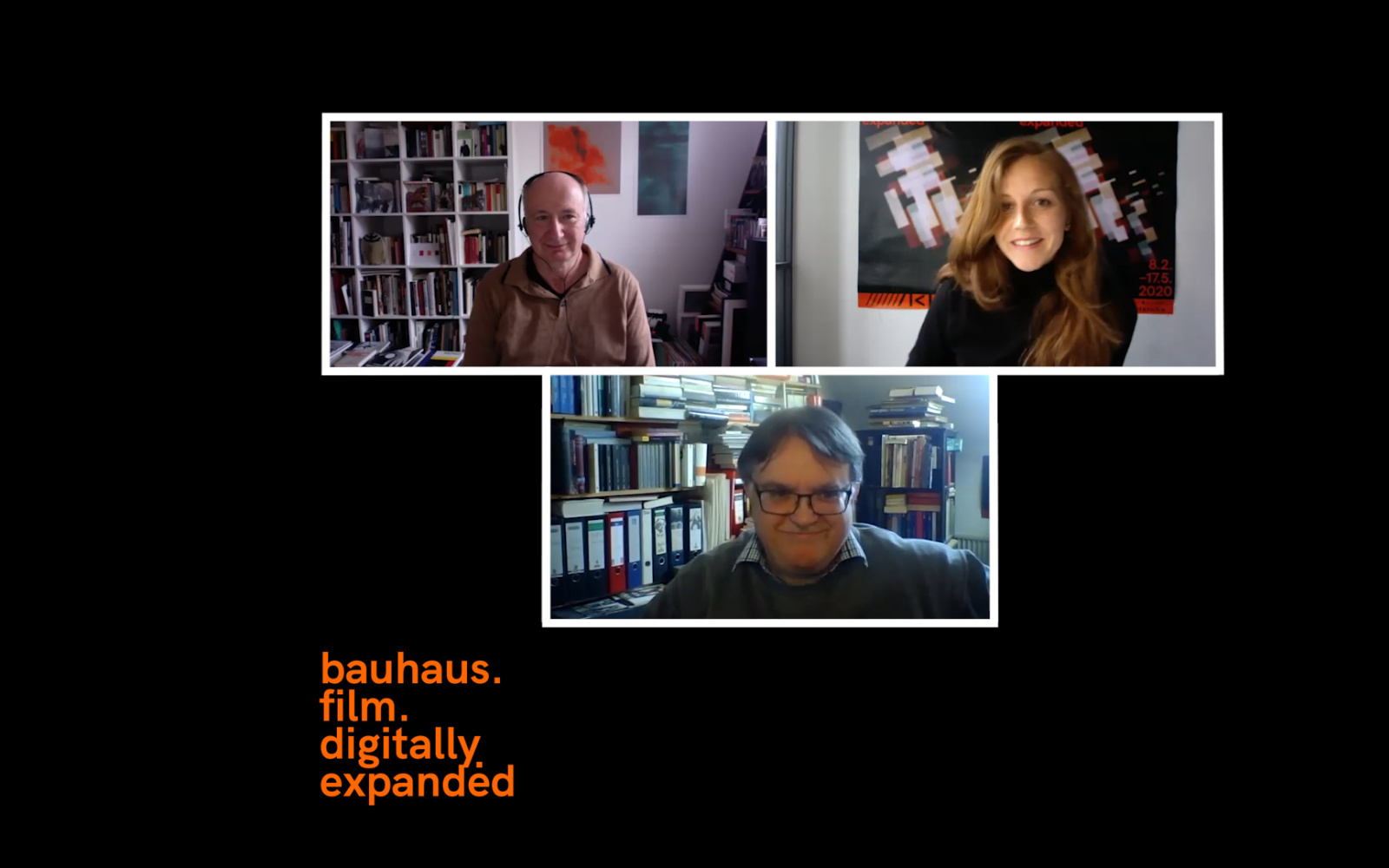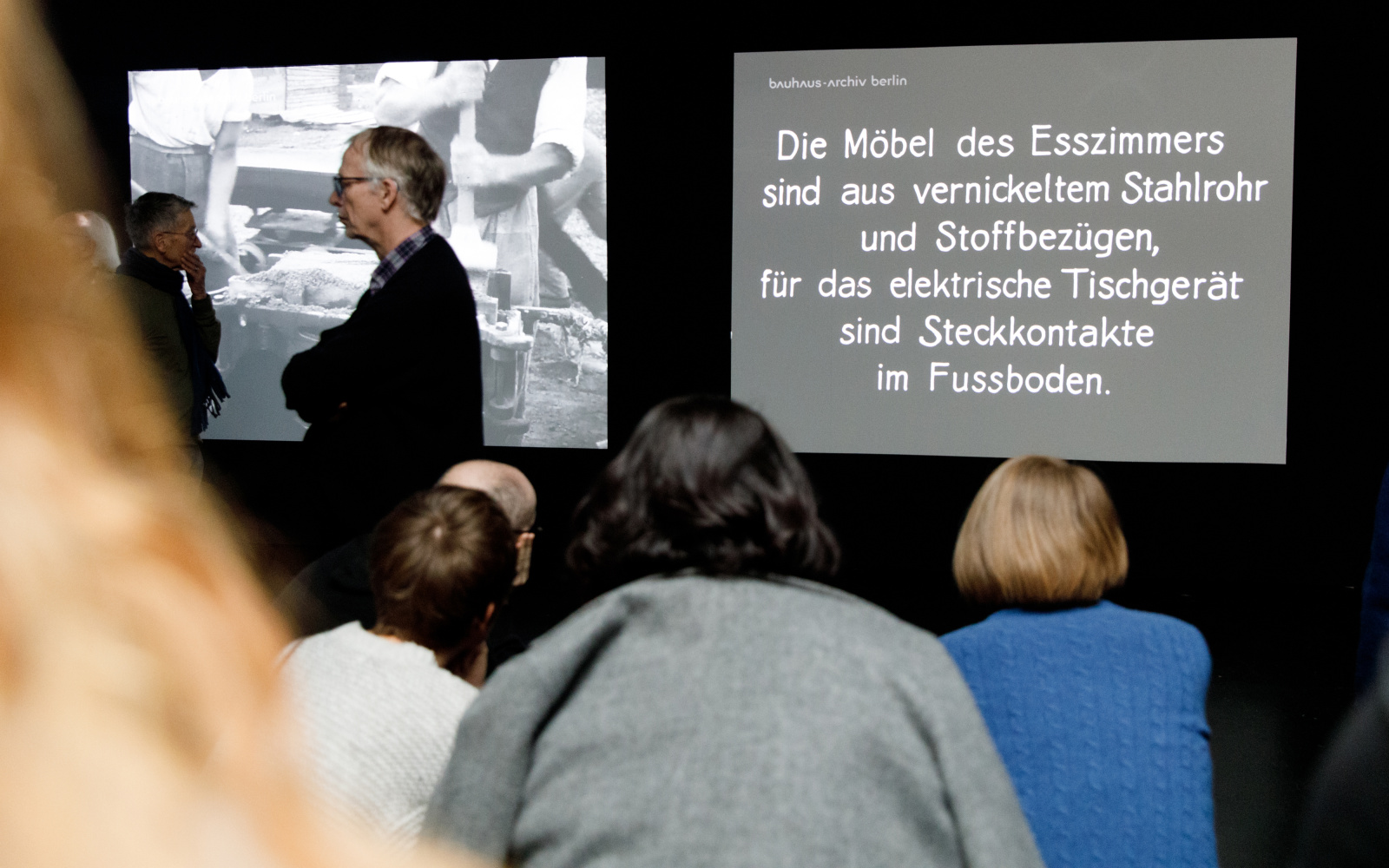Architectural Films
in the exhibition »bauhaus.film.expanded«
The ideas of the »Arbeitsrat für Kunst« [Work Council for Art] founded in 1918 – to which Walter Gropius, Otto Bartning, and Lyonel Feininger also belonged – materialized at the Bauhaus. The Bauhaus understood building not as a purely private endeavor, but as a public task. The school’s architectural films reflect most clearly the broad scope of the reform efforts in the Weimar Republic.
Ella Bergmann-Michel studied at the Bauhaus for only one semester before moving to Frankfurt in 1920; however, the influence of the Bauhaus on her work is undeniable. Her film »Wo wohnen alte Leute?« [Where do old people live?] begins with a polemic against the lonely, noisy living conditions in Frankfurt am Main’s old town. The film presents a socially progressive senior citizens’ residence with airy and light modern functional architecture, situated in a green area. The focus lies on the achievements of modern architecture that restructures the norms of social housing and collective living.
The nine-part film series »Wie wohnen wir gesund und wirtschaftlich?« [How can we live healthily and economically?] by Walter Gropius presents the ideas of the »Neues Bauen« [New Building] movement. It shows the modern materials used, concrete, steel, and glass, and the new construction methods of prefabrication and buildings made of concrete slabs. Three of the series’ nine parts are dedicated to the Bauhaus and evidence that the Bauhaus’s legendary status by no means only originated in the post-war period. Since the 1920s, Bauhaus artists, teachers, and students con- structed and publicized this unique school in their advertising films. The directors Walter Gropius and Mies van der Rohe developed sophisticated marketing strategies in which the novel designs of the Bauhaus products were advertised using the then new media of photography and film.
Films in the exhibition »bauhaus.film.expanded«
-
Architectural Films
Richard Paulick, »How Can We Live Healthily and Economically? Part 6: Bauhaus Dessau and its new Architecture«, DE 1926–1928
35mm, b/w, silent, 11:45 by 16 frames/sec
Digital copy of a 35mm positive: Bauhaus-Archiv Berlin
© Bauhaus-Archiv BerlinLászló Moholy-Nagy, »Architect’s Congress«, CH/GB 1933/1934
35mm, b/w, silent, 17:10 [44:00] by 16 frames/sec
Digital copy of 35mm film: Light Cone
© Light Cone & the Moholy-Nagy FoundationLászló Moholy-Nagy, Curt Schumann, »The Test of Fire«, DE 1935
35mm, color, music, 01:57 by 25 frame/sec
DVD Pal of a 35mm Positive
© Murnau StiftungPeter Pewas, »Jena Glass Ad«, DE 1934
35mm, b/w, music, 00:32 by 25 frames/sec
DVD PAL of a 35mm positive
© Stiftung Deutsche KinemathekLászló Moholy-Nagy, Sibyl Moholy-Nagy (née Pietzsch), György Kepes
»Feeding the Infant (Jena Glass)«, DE 1934
35mm, b/w, silent, 11:17 by 25 frames/sec
DVD PAL copy of a 35mm positive
© SchottLászló Moholy-Nagy, Sibyl Moholy-Nagy (née Pietzsch), György Kepes
»The Gourmet«, DE 1934
35mm, b/w, music, 01:43 by 25 frames/sec
DVD PAL copy of a 35mm positive
© SchottLászló Moholy-Nagy,Sibyl Moholy-Nagy (née Pietzsch), György Kepes
»A Lunch in a Jena Glass«, DE 1934
35mm, music, 06:51 by 25 frame/seconds
DVD PAL of a 35mm positive
© SchottHoracio Coppola, »Ási nació el Obelisco« [The Obselisc was Born], ARG 1936
16mm, b/w, silent, 06:52 by 25 frames/sec
DVD PAL filmed of a 16mm PositiveElla Bergmann-Michel, »Where do the Elderly live?«, DE 1931
35mm, b/w, silent, 14:42 by 14 frames/sec
Combination of digital copies of two 35mm positives: DFF - Deutsches Filminstitut & Filmmuseum Frankfurt am Main
© Sünke MichelRichard Paulick, »How Can We Live Healthily and Economically? Part 4: New Living (Haus Gropius)«, DE 1926–1928
35mm, b/w, silent, 13:59 by 16 frames/sec
Digital copy of a 35mm positive: Bauhaus-Archiv Berlin
© Bauhaus-Archiv Berlin

bauhaus.film.digitally.expanded: Architekturfilme
Some films in this section were available online until August 23, 2020. The release was accompanied by a live discussion on April 30, 2020 at 6 pm between Markus Heltschl and Thomas Tode, moderated by Teresa Retzer.
